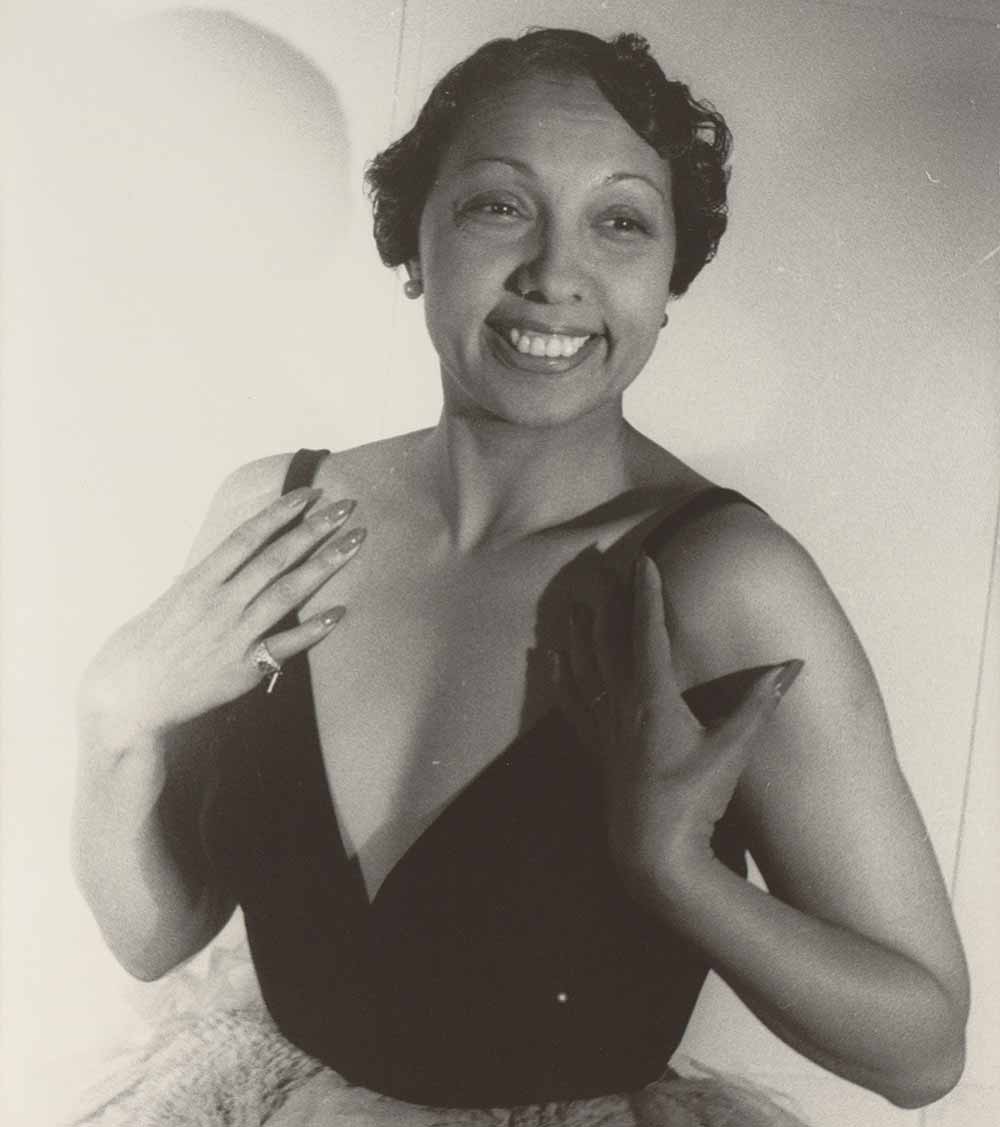 Josephine Baker, circa 1949. Used by Creative Commons License
Josephine Baker, circa 1949. Used by Creative Commons License
By Jan White
This email address is being protected from spambots. You need JavaScript enabled to view it.
Josephine Baker, the stunningly beautiful jazz icon once called “the most sensational woman anyone ever saw” by Ernest Hemingway, was known throughout Europe and America for her singing and dancing. She was the first black woman to star in a major motion picture, the 1927 silent movie Siren of the Tropics. Baker was one of the most celebrated performers to headline in the Folies Bergere in Paris, and she became an iconic image and a symbol of the Jazz Age and the Roaring Twenties.
So how did someone so famous become a spy during World War II?
Baker was born on June 3, 1906, in St. Louis, Missouri, the daughter of a washerwoman and a vaudeville drummer who abanded mother and child shortly after that. Baker grew up fatherless, living in poverty, married at age thirteen, with little schooling but a huge desire to dance. When she couldn’t find work, Baker became a busker, dancing on the streets and collecting money from onlookers. Eventually, she caught the eye of an African American theater troupe.
At fifteen, Baker exchanged poverty and a husband for a chance to perform at the Plantation Club in New York City. She toured the states in the chorus line of Shuffle Along until she came of age and transferred to the Broadway production until the show ended in 1923. And in 1924, Baker joined the revue The Chocolate Dandies for several months before sailing to Paris in 1925.
It was in Paris that Baker’s career flourished, gainly both fame and notoriety as a burlesque dancer for her risqué routines. At the time, Baker was the most successful American entertainer working in France. The artist Picasso drew paintings depicting her alluring beauty, and Jean Cocteau, the French poet, playwright, novelist, and filmmaker, helped elevate Baker to international stardom. Disgruntled by the segregationalism that continued to plague America, Baker considered France her new home, and after her marriage to French industrialist Jean Lion in 1937, she became a French national.
Her celebrity status and loyalty to France inspired the head of France’s military intelligence, Jacques Abtey, to approach Baker with his unusual plan. Typically, the agency sought out men and women who could travel and work incognito as spies. But Abtey’s idea was to use Baker’s fame as her cover, counting on her beauty and charm to gain secrets from fawning diplomats.
Baker agreed to take on the challenge. “France made me what I am. The Parisians gave me their hearts, and I am ready to give them my life.” She began attending diplomatic parties at the Italian and Japanese embassies, where she would write notes of what she heard on the palms of her hands and sleeve-covered arms. “Nobody would think I’m a spy,” she told Abtey.
In 1940, Baker and Abtey smuggled documents to General Charles de Gaulle. She pinned notes with the information she gathered inside her underwear, counting on her celebrity status to avoid a strip search. Messages were written in invisible ink on her sheet music. And when forced to leave her home by the German forces invading Paris, Baker aided the French Resistance by hiding refugees in her new quarters.
Following the war, Baker was awarded the Resistance Medal by the French Committee of National Liberation, the Croix de Guerre by the French military, and was named Chevalier of the Legion d’honneur by General Charles de Gaulle. After decades away from the states, Baker returned and became an outspoken advocate of civil rights, speaking out against segregation and working with the NAACP, which proclaimed Sunday, May 20, 1951, as “Josephine Baker Day.” During her time as a civil rights activist, Baker adopted twelve children from different ethnicities and religions, referring to them as “the rainbow tribe.” Her goal was to prove that people from different backgrounds could work together and grow up peacefully.
In later years, Baker struggled financially but still made public appearances. On April 8, 1975, Baker starred in a retrospective review, celebrating her fifty years in show business. The performance opened to rave reviews, and the demand for seating was so great that fold-up chairs were added to accommodate the overflow. The opening night crowd included celebrities like Sophia Loren, Mick Jagger, Shirley Bassey, Diana Ross and Liza Minnelli.
But four days later, Baker suffered a cerebral hemorrhage and was found in a coma, lying peacefully in her bed surrounded by newspapers with glowing reviews of her performance. More than 20,000 mourners attended her funeral. Baker was interred at the Cimetiere de Monaco, the only American-born woman to receive full French military honors.
Even after her death, Baker’s influence could be seen through celebrities like Angelina Jolie, who said that Baker was “a model for the multiracial, multinational family she was beginning to create through adoption” In 2006, Beyonce performed Baker’s famous banana dance at the Fashion Rocks concert at Radio City Music Hall. And in 2018, a documentary, Josephine Baker: The Story of an Awakening, premiered at the Beirut Art Film Festival. It contained rarely-seen archival footage with music and narration.
In 2021, a symbolic casket containing soil from places Baker had lived, like St. Louis, Paris, the South of France, and Monico, was interred at the Panthéon in Paris. The honor made her the sixth female and the first black woman to be interred in the mausoleum, which paid tribute to the “great men” of the French Republic.
You are a guest
or post as a guest
Be the first to comment.

